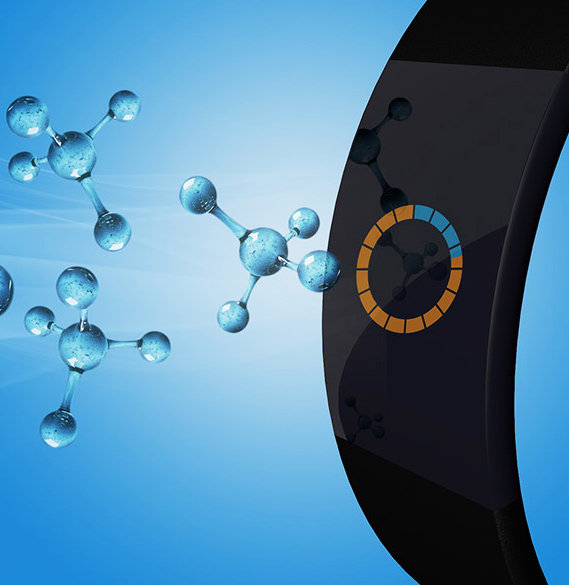Coming soon: wearable devices to detect, measure toxic chemical exposures
The next big thing in digital health self-monitoring devices is expected to be personal chemical exposure monitors, or PCEMS, part of a surging consumer device market projected to reach $72.9 billion by 2020
Beyond looking at the individual characteristics of each potential toxic threat, there is the reality of the synergy of what happens when there is a toxic stew at work.
What happens when consumers are able to arm themselves with knowledge about the toxic chemical threats in their daily lives? How will that change behavior?
Editor’s Note: How big is the growing consumer market for digital wearable devices? The answer can be found, in part, by the news last week that Google had purchased the wearable device company, Fitbit, for $2.1 billion.
A second sign of the continuing huge growth potential in the consumer market, though under the radar screen, was the recent column in Bloomberg Environment, published on Nov. 4, written by Lindsay McCormick from Environmental Defense Fund, with the headline, “What if we had a Fitbit for chemical exposures?”
Scientists – and consumers – mostly remain in the dark about chemical exposure, despite the ubiquitous way that potentially harmful chemicals can find their way into our water, land, and air – and our bodies, McCormick wrote.
“Many might be surprised to learn that we have human exposure data on less than 4 percent of the roughly half-million chemicals in commerce,” McCormick wrote. “What we do know is that exposure to certain chemical substances have been linked to specific adverse health impacts, including reproductive harm, cancers, disruption of normal hormone activity, and impaired neurological development in children.”
Now, McCormick continued, a diverse group of emerging technologies , known as personal chemical exposure monitors, or PCEMS, “have the potential to make the invisible visible,” disrupting the status quo.
The column was based upon a detailed report published by the Environmental Defense Fund in July of 2019. ConvergenceRI is republishing, with permission, the original study.
WASHINGTON, D.C. – Chemicals make up the material backbone of products in commerce – from couches and carpets to the clothes we wear. While chemicals serve an important role in our economy, we know that some widely used chemicals harm our health. Unfortunately, we have surprisingly little understanding of what we’re exposed to and at what level.
A new category of technologies entering the market may change the status quo: personal chemical exposure monitors, or PCEMs. These technologies are a new entrant in the rapidly growing “monitored-self” market, joining a suite of available products designed to help people monitor and understand their individual health – from home-delivered kits that screen for genetic conditions to heart rate-monitoring watches.
To accelerate and inform the efforts of PCEM technology developers, investors and other stakeholders, we conducted, with support from Eastern Research Group, inc., a first-of-its-kind landscape assessment of the market demand for technologies capable of detecting an individual’s exposure to harmful chemicals.
What we did
To help characterize and quantify the existing demand for PCEMs, the Environmental Defense Fund:
• Surveyed 616 individuals about their willingness to pay for PCEMs and the device features that matter most to them through a choice experiment.
• Conducted 16 expert interviews with stakeholders across the PCEM supply chain – ranging from investors and technology developers to industrial hygienists and potential institutional customers – to better understand the market challenges and opportunities that exist for these products.
Key findings
The willingness to pay [known as WTP] choice experiment found a clear market for PCEM devices among general consumers:
• The highest WTP value for a single surveyed hypothetical device was $459.
• Nearly 40 surveyed hypothetical devices had a WTP between $100 and $300 – a price range reflective of the actual price of other personal monitoring devices on the market today.
• Device features that consumers valued the most include getting data on a large number of chemicals and receiving immediate results.
• Experts affirmed the demand for PCEMs both among consumers and in the workplace monitoring sector, identified future opportunities for PCEMs, and proposed solutions for existing and anticipated challenges in the marketplace
Done well, a device that provides information about the chemicals in our daily life will change consumer habits. If you can capture that change, you can monetize it.
Our research shows that demand for PCEMs exists today, and we anticipate the demand to increase over time given the expanding market for health and wellness technologies and rising concerns about chemicals in the environment. Entrepreneurs who can bring viable personal chemical monitoring products into commerce have an incredible opportunity to claim part of a large and rapidly growing health and wellness market.






